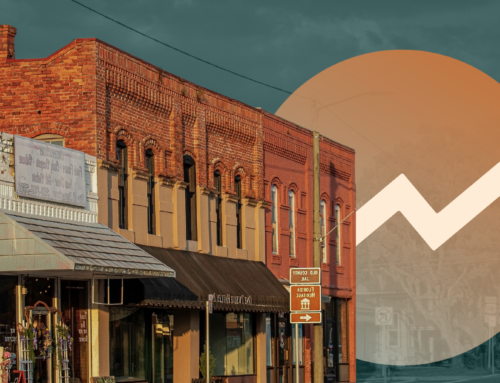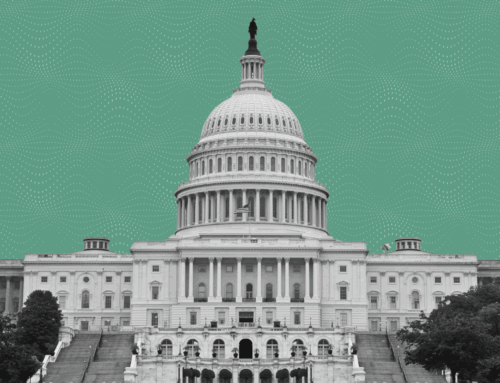Amid growing division within the U.S. economy, most distressed zip codes have seen no net gains in jobs or businesses this century
Washington, D.C. – The Economic Innovation Group (EIG) today released the 2017 Distressed Communities Index (DCI), a nationwide analysis and interactive tool for measuring the economic vitality of U.S. zip codes, cities, counties, and congressional districts. The study evaluates the relationship between community well-being and a number of important factors, including individual health outcomes, public assistance spending, demographics, and political representation. It reveals a growing divergence in the economic and social experience of America’s distressed communities from the nation as a whole.
“Economic inequality in America translates into opportunity gaps for too many communities,” said Steve Glickman, cofounder and executive director of the Economic Innovation Group. “Unless policymakers in both parties reframe their priorities, economically distressed communities will continue to experience a downward spiral that results in a loss of faith in the American dream and less healthy and fulfilling lives.”
According to the DCI, one in six, or 52.3 million, Americans live in a distressed community, places that are characterized by deep poverty, pervasive joblessness, low levels of educational attainment, and little to no economic growth. In the average distressed zip code, more than a quarter of the population lives in poverty, 40 percent of prime age adults are missing from the workforce, and nearly a quarter of adults lack even a high school diploma. Most of today’s distressed zip codes have seen a net loss in employment or business establishments since the year 2000.
Meanwhile, America’s prosperous zip codes, the nation’s most populous and economically vibrant places, are largely insulated from the challenges facing the rest of the country. These communities are home to 84 million people, and they garnered more than half of the recovery’s new jobs and business establishments. The poverty rate is more than 20 points lower in the average prosperous community than in the average distressed one, and residents enjoy incomes that approach, on average, 150 percent of their statewide median.
While economic disparities between places are magnified, the report finds a clear link between an individual’s health outcomes and the economic conditions of their community. Residents of distressed counties have a lower life expectancy than their neighbors in prosperous counties by nearly five years.
“These findings underscore just how badly we are limiting our national potential,” said John Lettieri, cofounder and senior director for policy and strategy of the Economic Innovation Group. “There is a huge social and economic cost to leaving so many people and places behind.”
Additional findings from the study include:
- High growth in a few economic powerhouses buoys national numbers while obscuring stagnant or declining economic activity in other parts of the country. The average distressed zip code lost six percent of its jobs from 2011 to 2015, and the number of business establishments decreased by 6.3 percent. Economic expansion was widespread in prosperous zip codes, by contrast, with 88 percent experiencing job growth from 2011 to 2015 and 85 percent registering establishment increases.
- Disparities in educational attainment are closely linked to the diverging fates of communities. Nearly a quarter of Americans living in distressed communities have not completed high school, and more than one-third have no education beyond a high school diploma or equivalent. In fact, advanced degree holders – those with Master’s or doctorate degrees – are more prevalent in prosperous communities than college graduates are in distressed ones.
- The DCI reveals massive disparities in physical well-being that parallel those in economic well-being. From complications with pregnancy to nutritional deficiencies, cancers, substance abuse, and self-harm, life-threatening disorders are more prevalent in distressed corners of the country. Compared to prosperous counties, cancer deaths are 27 percent higher and neonatal mortality 86 percent higher in distressed counties. Mortality rates from mental and substance abuse disorders are 64 percent higher, and deaths from self-harm and interpersonal violence are 52 percent higher in distressed counties.
- The federal safety net supports struggling places as well as struggling people. Distressed zip codes are home to over 30 million fewer people than prosperous zip codes overall, but they contain three times as many people receiving SNAP (food stamps) and other cash public assistance benefits. Twice as much Medicaid spending per capita flows to distressed counties as to prosperous ones.
- Race and ethnicity remain strong predictors of one’s economic well-being in the United States. Asians and whites are more likely to live in prosperous zip codes than any other type, while blacks and Native Americans are most likely to live in distressed ones. Zip codes in which minority groups constitute a majority of the population are two times more likely to be distressed than the average zip code.
- Economically distressed communities are a bipartisan challenge. Democrats and Republicans each represent millions of Americans living in distressed zip codes at all levels of government. In the U.S. House of Representatives, Republicans disproportionately represent the nation’s most prosperous congressional districts. Republicans represent 63 percent of the country’s prosperous districts compared to Democrats’ 37 percent.
Relying on Census Bureau data for the years 2011 to 2015, the DCI covers over 26,000 zip codes and 99.9 percent of the U.S. population. DCI scores can be calculated at the city, county, and congressional district levels. Places are divided evenly into five different tiers based on their distress scores, or performance on the index, relative to their peers: Prosperous, comfortable, mid-tier, at risk, and distressed.
Supporting Resources
You can view the full report and additional assets at eig.org/DCI. EIG welcomes press, bloggers, policymakers, think tanks, and other interested parties to use and reference our research with attribution, such as, “Source: Economic Innovation Group Distressed Communities Index, 2017.”
About the Economic Innovation Group (EIG)
The Economic Innovation Group (EIG) is an ideas laboratory and advocacy organization whose mission is to advance solutions that empower entrepreneurs and investors to forge a more dynamic American economy. Headquartered in Washington, D.C. and led by an experienced, bipartisan team, EIG convenes leading experts from the public and private sectors, develops original policy research, and works to advance creative legislative proposals that will bring new jobs, investment, and economic growth to communities across the nation. For more information, visit eig.org.





